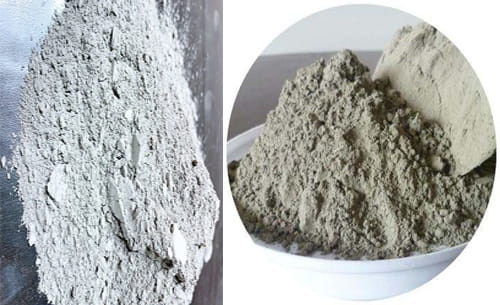Rapid Hardening Cement- All You Need to Know
- Concrete Cost Estimator
- Concrete Continuous Footing
- Landscape Bidding and Estimating
- Construction Cost Estimating
- Concrete and steel cost estimation
- Construction Cost Estimate Breakdown
- Construction Estimating Worksheet
- Home Construction Cost Estimate
- Estimate Pricing Sheet
- Sheet for General Contractor
- Construction Cost Estimate
- Labor Materials Cost Estimator
- Masonry Estimating Sheet
- Sheet for Building Contractor
- Construction Schedule Bar chart
- General Cost Estimator Sheet
- General Construction Estimate
- Building and Road Estimating Sheet
- Detailed expense estimates
- Door and Window Takeoff Sheet
- General Construction Cost Estimating Sheet

Rapid hardening cement is a very popular term in the construction industry news. If you are not familiar with this variety of cement then don’t worry because in this blog I have talked about rapid hardening cement and what its advantages and disadvantages are.
What is rapid hardening cement?
Rapid hardening cement or high early strength portland cement is a special variety of cement that has less initial setting time.
Where other types of cement can take up to 7 days to set, the initial setting time of rapid cement is just 3 days.
Uses of Rapid Hardening Cement
Here are some uses of rapid hardening cement.
- It is used in construction sites where the framework needs to be removed as soon as possible due to deadlines or time constraints.
- It is used where there is a need for high early strength.
- It is used to manufacture posts, electric poles, block fences, etc so that they can leave the molds quickly.
- It is used in the construction of roads which can't be shut for long due to high traffic.
- It is widely used in cold weather concreting so that the rapid release of heat protects the concrete from freezing.
Composition of Rapid Hardening Cement
Rapid hardening cement is a mixture of calcareous, siliceous, argillaceous, and other substances.
Rapid hardening cement contains ingredients in the following proportion.
| Sr.No. | Scientific Name | Chemical Formula | Percentage |
| 1. | Tricalcium Silicate | Ca3O5Si | 60% |
| 2. | Tricalcium Aluminate | Ca3Al2O6 | 10% |
| 3. | Tetracalcium Aluminoferrite | Ca4Al2Fe2O10 | 8 % |
Properties of Rapid Hardening Cement
Here are some properties of rapid hardening portland cement.
- Hardens very quickly in very little moisture.
- Provides good early strength.
- Release a large amount of hydration heat.
- Has a lighter weight.
- Sets and cures very quickly.
Advantages of Rapid Hardening Cement
The high strength of rapid concrete cement comes with many advantages.
- Due to its fine clinkers, it has an impervious structure thus becoming resistant to chemical and water attacks.
- It does not need a long time to set and cure.
- Due to a rapid release of hydration heat, it is very good for construction in cold regions.
- As it hards very rapidly, it becomes an ideal choice for the construction of roads and highways where the traffic can't be stopped for long.
- RHC is good for mortar and plaster purposes because it has a lighter weight than OPC and PPC.
- It is very popular in cold regions because of its less initial setting time.
Disadvantages of Rapid Hardening Cement
Apart from the advantages of the rapid hardening cement, it also comes with some disadvantages.
- It is not suitable for structures that are underwater or have any sort of contact with water because this cement releases a large amount of heat and that can lead to shrinkage cracks in the structure.
- It is not ideal for building large concrete structures because it releases a large amount of heat and therefore creates cracks in the structure.
- This cement can harden very quickly in the presence of very little moisture, therefore it is challenging to store it.
- The cost of Rapid hardening cement is higher than its counterparts, therefore it may create a misbalance in the budget of the construction.
This was all about rapid hardening cement that is used for construction.
- Application of concrete calculator
- Roofing Calculator can streamline the roof estimating process
- House construction cost calculator
- Engineering column design excel spreadsheet
- Material Estimating Sheet with Excel
- Materials List and Cost Estimate Worksheet
- Concrete Slab Estimating Calculator Sheet
- Common types of foundations for buildings
- Online calculation of construction materials
- Estimating with Excel for the Small Contractor
- Concrete Beam Design Spreadsheet
- Virtual Construction Management app for construction
- Autodesk’s Project Skyscraper
- Reed Construction’s Reed Insight
- Manage your construction project documentation
- Costimator, the popular cost estimating software
- On Center Software for construction professionals
- Free Construction Estimating Software
- Plumbing Calc Pro
- Cost Estimate Worksheet
- HVAC Piping Quantity Takeoff Worksheet
- Construction Estimating Software Sheet
- Estimate Cost Templates
- Construction Punch List
- Construction cost estimating template consisting estimating basic
- Gantt Chart Template for Excel
- Download Civil Engineering Spreadsheets with Verification
- The Building Advisor Estimating and Budgeting Worksheet
- Spreadsheet for design of concrete bridge
- Construction Estimating Software Free









